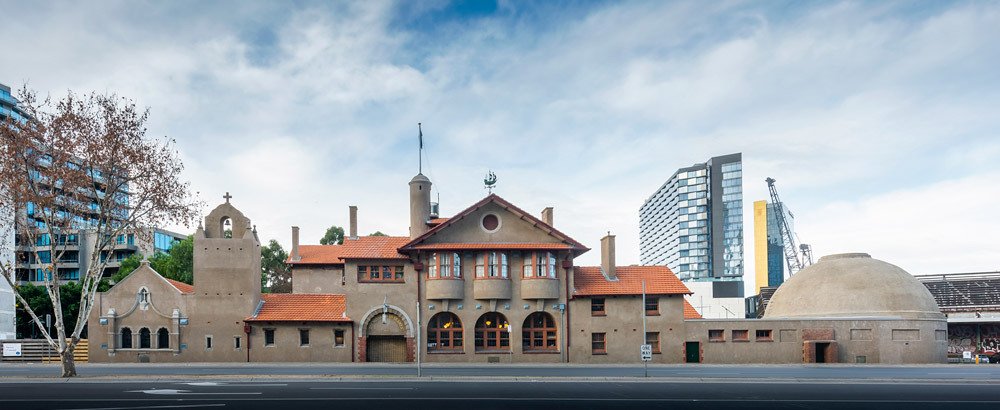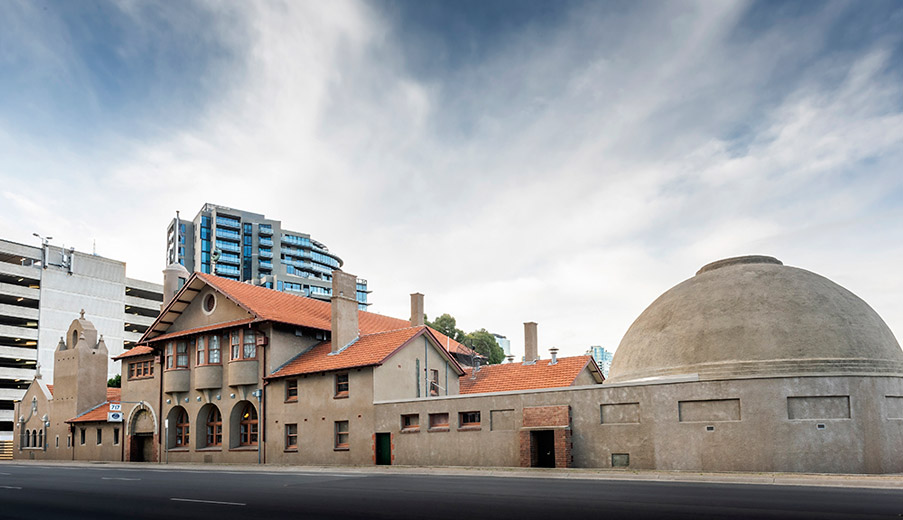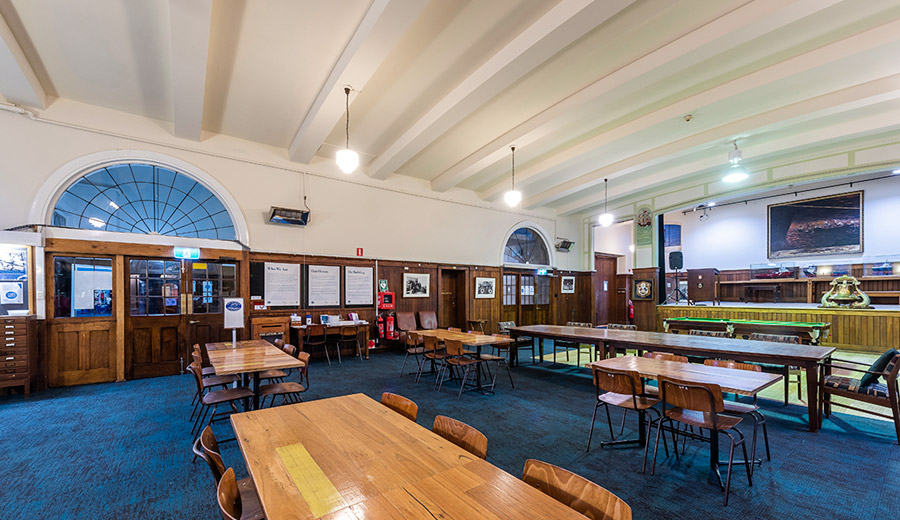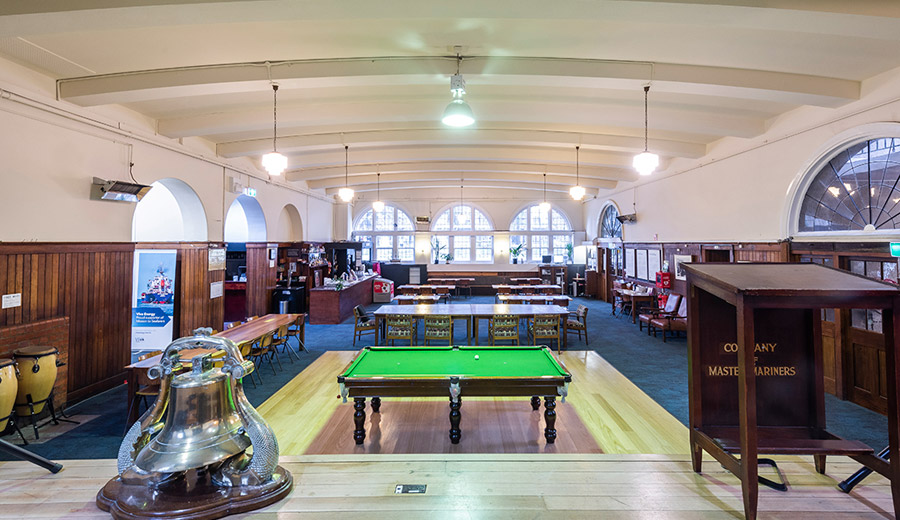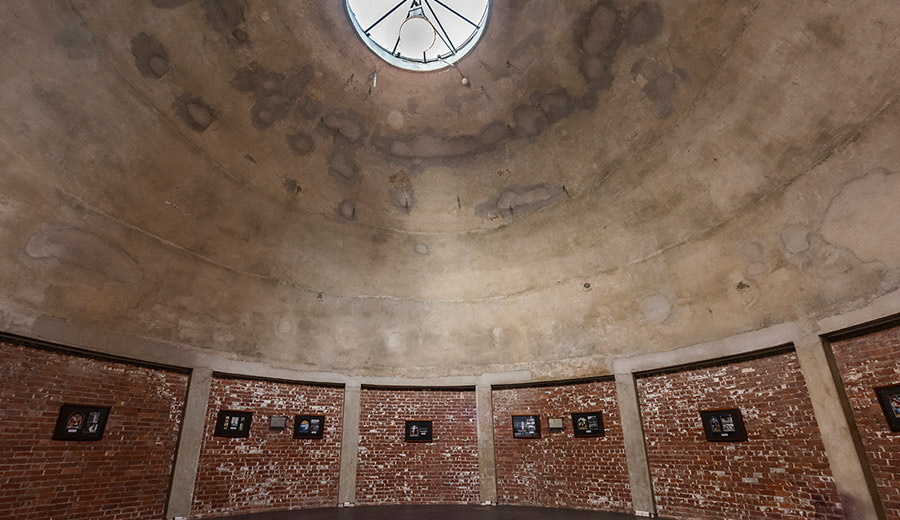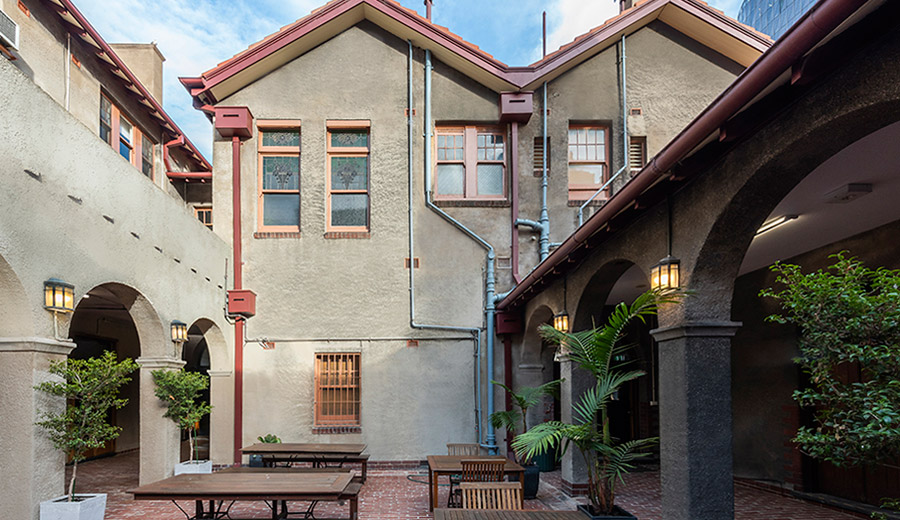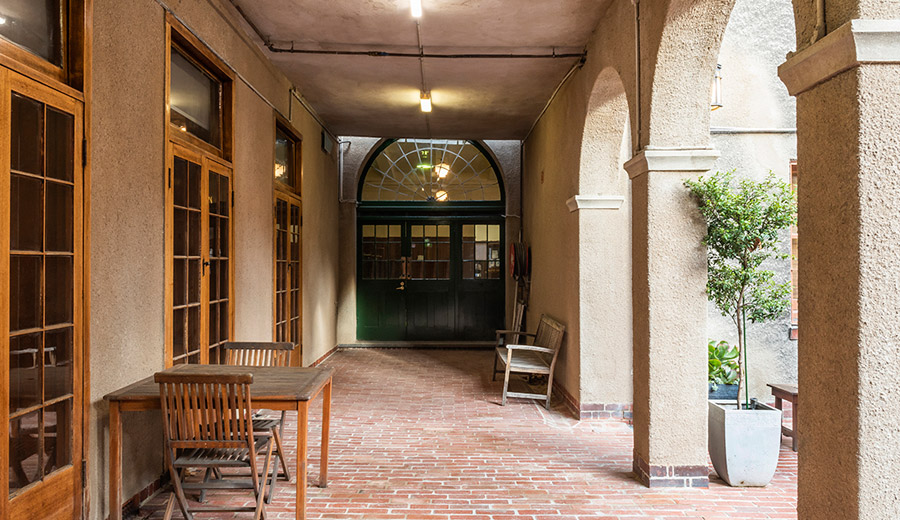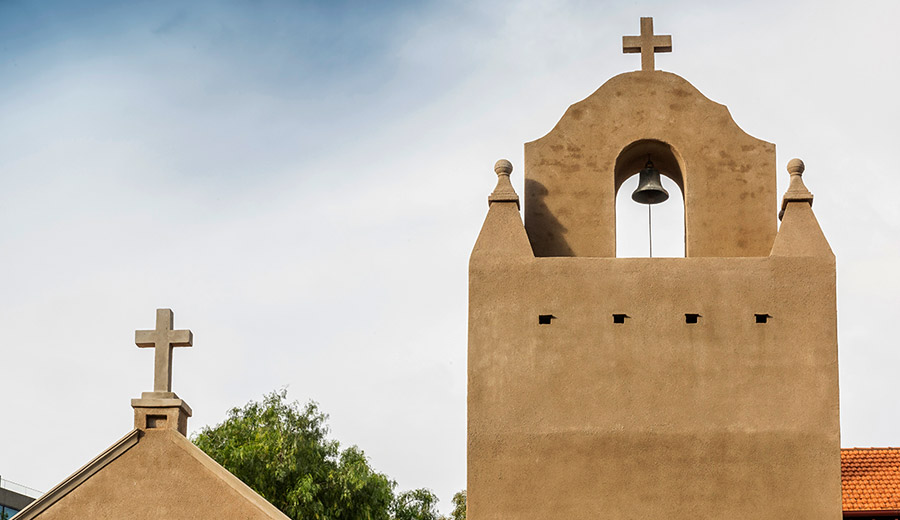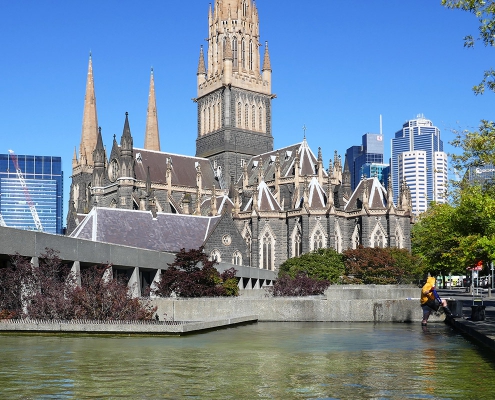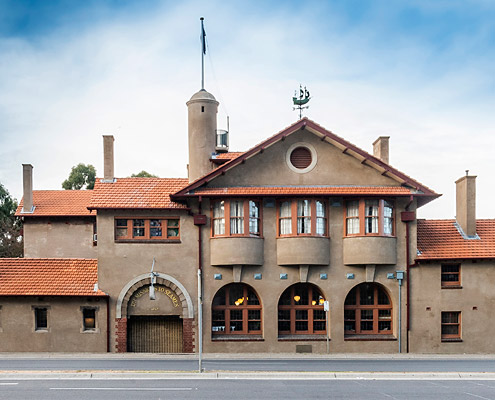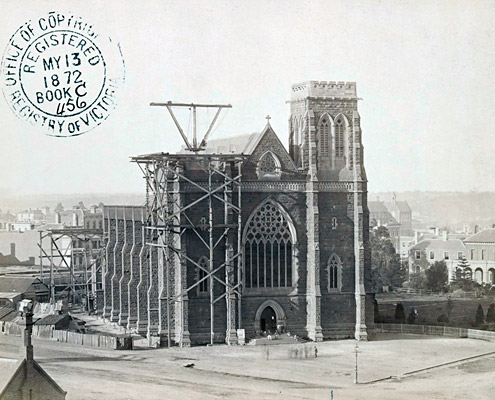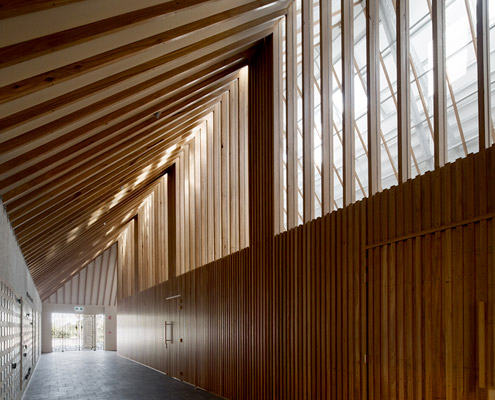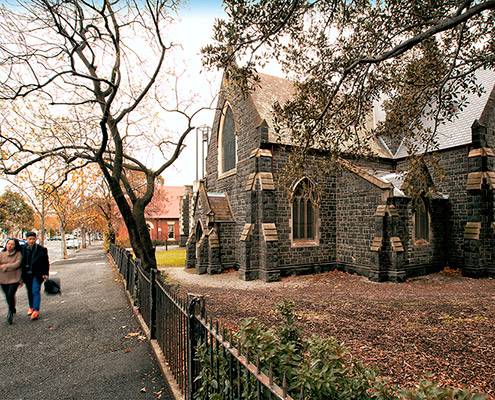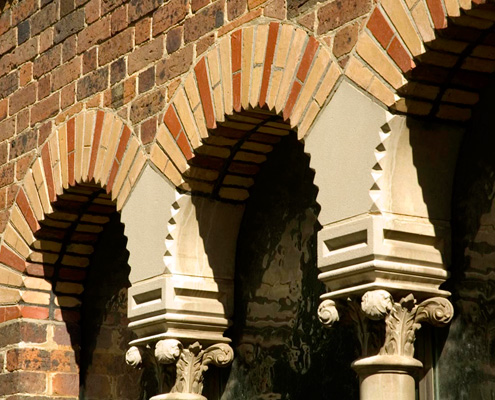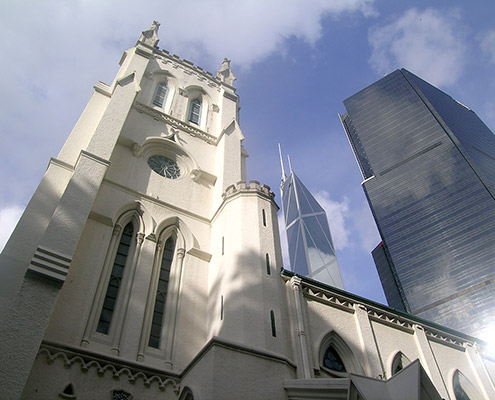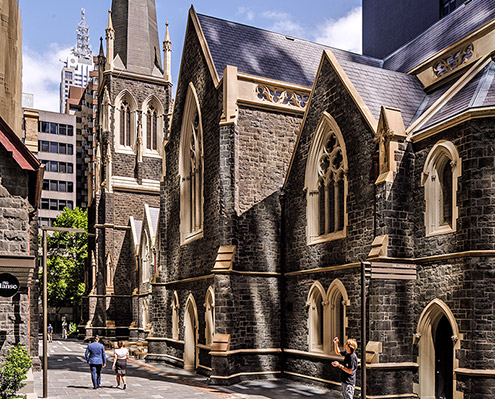
Mission to Seamen is located on the lands of the Wurundjeri people of the Kulin nations
The Mission to Seamen building, home of the Anglican organisation the Mission to Seafarers, is something of a head turner, with its interesting massing, belfry, Spanish Mission details and curious Norla Gymnasium concrete dome. In 2018, we investigated the fabric and made recommendations for prioritised works, a process that revealed a history of head scratching over cracks and a leaning chapel. Fortunately, most of the building seems to not have moved very much in the last 20 years, and conservation works to exterior and parts of the interior were completed in 2020.
The original Mission branch in Melbourne (the Victorian Bethel Union) was set up in 1857 on a large American hulk, the Emily, moored in Hobson’s Bay and functioning as a floating church. In 1907, the Victorian Mission to Seafarers (created 1905) commenced construction of a wharf-side building in what is now Docklands, to the design of Anglican diocese architect Walter Richmond Butler (1864-1949). This first building became know as the Sidderley Street Institute, after its location, very near the present building.
The present mission was also designed by Walter Butler, and built in stages, 1916-19 (opened 11 September 1917). Its construction became necessary as the Melbourne Harbour Trust wanted the Sidderley Street site for wharf alterations. And it was the proximity of the working wharfs that seems to have caused the first issues for the Mission to Seamen building, as the second structure is now known. Settlement started almost immediately, and the reason was soon clear when movement ceased during a dockers’ strike. Remediation works were carried out in 1918. Since then, the complex has had many repairs and interventions, some incompatible with the original fabric.
The Mission to Seamen is made up of five sections: a memorial chapel, the former Norla Gymnasium, a chaplain’s residence, a caretaker’s residence and the main building. In the inter-war period, up to 300 seafarers used it on a daily basis. The 2020 works included render repairs to all the exteriors, involving replacement of the underlying mesh like-for-like, and patch repairs and some render replacement. The render has been carefully matched to the existing three types of textured finish.
Works to the chapel included repairs to the leadlight windows, crack repairs, re-pointing and structural works to the bell tower. Steel reinforcement bars at the foot of the tower were found to have rusted severely, requiring splicing with new reinforcement. New pressed cement orbs and a cross were made to complete the ornamentation on the top of the tower and chapel.
Other notable works include the replacement of waterproof membranes to the balcony and the Gymnasium dome, re-stumping, main hall floor replacement, door hardware upgrades for compliance, leadlight repair to the main hall windows, re-painting, concrete patch repairs and anti-graffiti treatment to the dome, and repairs to brickwork, render, concrete lintels, flashings and rainwater goods throughout, as identified in the 2018 report.
Heritage data
constructed 1916-19
original architect Walter Richmond Butler
victorian heritage register H 1496
photos : Sarah Louise Jackson

